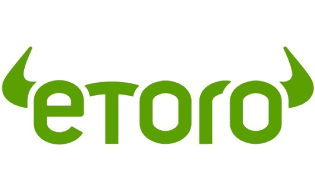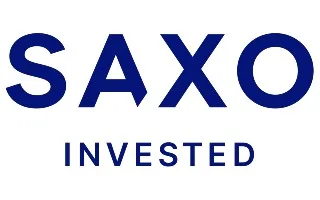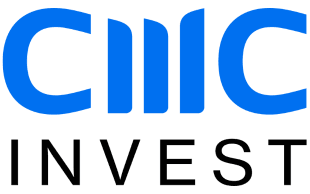$93.64
Morgan Stanley (MS) is a leading capital markets business with stocks listed in the US. It opened the day at US$93.34 after a previous close of US$92.65. During the day the price has varied from a low of USD93.28 to a high of USD94.42. The latest price was USD93.64 (25 minute delay). Morgan Stanley is listed on the NYSE. All prices are listed in US Dollars.
How to buy shares in Morgan Stanley
- Compare share trading platforms. To buy shares in a company listed in the US from Australia you'll need to find a trading platform that offers access to US stock markets. Look for a platform with low brokerage and foreign exchange fees.
- Open and fund your brokerage account. Complete an application with your personal and financial details, which will typically include your ID and tax file number. Fund your account with a bank transfer, credit card or debit card.
- Search for Morgan Stanley. Find the share by name or ticker symbol: MS. Research its history to confirm it's a solid investment that matches your financial goals.
- Purchase now or later. Buy today with a market order or use a limit order to delay your purchase until Morgan Stanley reaches your desired price. To spread out your risk, look into dollar-cost averaging, which smooths out buying using consistent intervals and amounts.
- Decide on how many to buy. At last close price of US$92.65, weigh your budget against a diversified portfolio that can minimise risk through the market's ups and downs. You may be able to buy a fractional share of Morgan Stanley, depending on your broker.
- Check in on your investment. Congratulations, you own a part of Morgan Stanley. Optimise your portfolio by tracking how your stock — and even the business — performs with an eye on the long term. You may be eligible for dividends and shareholder voting rights.
Our top pick for
US stocks

Our top pick for
Best for beginner

Our top pick for
Dividend investing

Morgan Stanley stock price (NYSE:MS)
Use our graph to track the performance of MS stocks over time.Have Morgan Stanley's shares ever split?
Morgan Stanley's shares were split on a 2:1 basis on 26 January 2000. So if you had owned 1 share the day before the split, the next day you would own 2 shares. This wouldn't directly have changed the overall worth of your Morgan Stanley shares – just the quantity. However, indirectly, the new 50% lower share price could have impacted the market appetite for Morgan Stanley shares which in turn could have impacted Morgan Stanley's share price.
Morgan Stanley shares at a glance
| Open | US$93.34 |
|---|---|
| High | US$94.42 |
| Low | US$93.28 |
| Close | US$93.64 |
| Previous close | US$92.65 |
| Change | US$0.99 |
| Change % | 1.0685% |
| Volume | 5,036,958 |
| 52-week range | US$68.041 - US$94.42 |
|---|---|
| 50-day moving average | US$89.9888 |
| 200-day moving average | US$85.6678 |
| Target price | US$98.52 |
| PE ratio | 16.8455 |
| Dividend yield | US$3.4 (3.67%) |
| Earnings per share (TTM) | US$5.5 |
Use the fields above to explore the returns from a historical investment. Please refer to the charts further up this page to see performance over 5 years, or other periods. Past performance doesn't indicate future results. Capital is at risk.
Morgan Stanley price performance over time
Historical closes compared with the last close of $93.64
| 1 week (2024-04-25) | 1.17% |
|---|---|
| 1 month (2024-04-05) | 1.27% |
| 3 months (2024-02-05) | 9.02% |
| 6 months (2023-11-03) | 22.79% |
| 1 year (2023-05-04) | 13.35% |
|---|---|
| 2 years (2022-05-04) | 7.36% |
| 3 years (2021-05-04) | 13.31% |
| 5 years (2019-05-03) | 94.84% |
Compare trading platforms to buy Morgan Stanley shares
Is it a good time to buy Morgan Stanley stock?
The technical analysis gauge below displays real-time ratings for the timeframes you select. However, this is not a recommendation. It represents a technical analysis based on the most popular technical indicators: Moving Averages, Oscillators and Pivots. Finder might not concur and takes no responsibility.
Is Morgan Stanley under- or over-valued?
Valuing Morgan Stanley stock is incredibly difficult, and any metric has to be viewed as part of a bigger picture of Morgan Stanley's overall performance. However, analysts commonly use some key metrics to help gauge the value of a stock.
Morgan Stanley's P/E ratio
Morgan Stanley's current share price divided by its per-share earnings (EPS) over a 12-month period gives a "trailing price/earnings ratio" of roughly 17x. In other words, Morgan Stanley shares trade at around 17x recent earnings.
That's relatively low compared to, say, the trailing 12-month P/E ratio for the NASDAQ 100 at the end of 2019 (27.29). The low P/E ratio could mean that investors are pessimistic about the outlook for the shares or simply that they're under-valued.
Morgan Stanley's PEG ratio
Morgan Stanley's "price/earnings-to-growth ratio" can be calculated by dividing its P/E ratio by its growth – to give 3.0607. A low ratio can be interpreted as meaning the shares offer better value, while a higher ratio can be interpreted as meaning the shares offer worse value.
The PEG ratio provides a broader view than just the P/E ratio, as it gives more insight into Morgan Stanley's future profitability. By accounting for growth, it could also help you if you're comparing the share prices of multiple high-growth companies.
Morgan Stanley share price volatility
Over the last 12 months, Morgan Stanley's shares have ranged in value from as little as US$68.041 up to US$94.42. A popular way to gauge a stock's volatility is its "beta".
Beta measures a share's volatility in relation to the market. The market (NYSE average) beta is 1, while Morgan Stanley's is 1.405. This would suggest that Morgan Stanley's shares are more volatile than the average for this exchange and represent, relatively speaking, a higher risk (but potentially also market-beating returns).
Morgan Stanley financials
| Revenue TTM | US$54.5 billion |
|---|---|
| Operating margin TTM | 34.69% |
| Gross profit TTM | US$46.4 billion |
| Return on assets TTM | 0.78% |
| Return on equity TTM | 9.17% |
| Profit margin | 17.48% |
| Book value | 55.499 |
| Market capitalisation | US$150.7 billion |
TTM: trailing 12 months
Morgan Stanley share dividends
Dividend payout ratio: 61.93% of net profits
Recently Morgan Stanley has paid out, on average, around 61.93% of net profits as dividends. That has enabled analysts to estimate a "forward annual dividend yield" of 3.67% of the current stock value. This means that over a year, based on recent payouts (which are sadly no guarantee of future payouts), Morgan Stanley shareholders could enjoy a 3.67% return on their shares, in the form of dividend payments. In Morgan Stanley's case, that would currently equate to about $3.4 per share.
Morgan Stanley's payout ratio would broadly be considered high, and as such this stock could appeal to those looking to generate an income. Bear in mind however that companies should normally also look to re-invest a decent amount of net profits to ensure future growth.
Morgan Stanley's most recent dividend payout was on 14 May 2024. The latest dividend was paid out to all shareholders who bought their shares by 28 April 2024 (the "ex-dividend date").
Morgan Stanley's environmental, social and governance track record
Environmental, social and governance (known as ESG) criteria are a set of three factors used to measure the sustainability and social impact of companies like Morgan Stanley.
When it comes to ESG scores, lower is better, and lower scores are generally associated with lower risk for would-be investors.
Morgan Stanley's total ESG risk score
Total ESG risk: 21.96
Socially conscious investors use ESG scores to screen how an investment aligns with their worldview, and Morgan Stanley's overall score of 21.96 (as at 12/31/2018) is pretty good – landing it in it in the 31st percentile of companies rated in the same sector.
ESG scores are increasingly used to estimate the level of risk a company like Morgan Stanley is exposed to within the areas of "environmental" (carbon footprint, resource use etc.), "social" (health and safety, human rights etc.), and "governance" (anti-corruption, tax transparency etc.).
Morgan Stanley's environmental score
Environmental score: 2.31/100
Morgan Stanley's environmental score of 2.31 puts it squarely in the 2nd percentile of companies rated in the same sector. This could suggest that Morgan Stanley is a leader in its sector terms of its environmental impact, and exposed to a lower level of risk.
Morgan Stanley's social score
Social score: 10.97/100
Morgan Stanley's social score of 10.97 puts it squarely in the 2nd percentile of companies rated in the same sector. This could suggest that Morgan Stanley is a leader in its sector when it comes to taking good care of its workforce and the communities it impacts.
Morgan Stanley's governance score
Governance score: 7.68/100
Morgan Stanley's governance score puts it squarely in the 2nd percentile of companies rated in the same sector. That could suggest that Morgan Stanley is a leader in its sector when it comes to responsible management and strategy, and exposed to a lower level of risk.
Morgan Stanley's controversy score
Controversy score: 3/5
ESG scores also evaluate any incidences of controversy that a company has been involved in. Morgan Stanley scored a 3 out of 5 for controversy – a middle-of-the-table result reflecting that Morgan Stanley hasn't always managed to keep its nose clean.
Environmental, social, and governance (ESG) summary
Morgan Stanley was last rated for ESG on: 2019-01-01.
| Total ESG score | 21.96 |
|---|---|
| Total ESG percentile | 31.16 |
| Environmental score | 2.31 |
| Environmental score percentile | 2 |
| Social score | 10.97 |
| Social score percentile | 2 |
| Governance score | 7.68 |
| Governance score percentile | 2 |
| Level of controversy | 3 |
Morgan Stanley overview
Morgan Stanley, a financial holding company, provides various financial products and services to corporations, governments, financial institutions, and individuals in the Americas, Europe, the Middle East, Africa, and Asia. It operates through Institutional Securities, Wealth Management, and Investment Management segments. The Institutional Securities segment offers capital raising and financial advisory services, including services related to the underwriting of debt, equity, and other securities, as well as advice on mergers and acquisitions, restructurings, real estate, and project finance. This segment also provides equity and fixed income products comprising sales, financing, prime brokerage, and market-making services; foreign exchange and commodities; corporate and commercial real estate loans, commercial mortgage and secured lending facilities, and financing for sales and trading customers, and asset-backed and mortgage lending; and wealth management services, investment, and research services. The Wealth Management segment offers financial advisor-led brokerage, custody, administrative, and investment advisory services; self-directed brokerage services; financial and wealth planning services; workplace services, including stock plan administration; annuity and insurance products; securities-based lending, residential real estate loans, and other lending products; banking; and retirement plan services to individual investors and small to medium-sized businesses and institutions. The Investment Management segment provides equity, fixed income, alternatives and solutions, and liquidity and overlay services to benefit/defined contribution plans, foundations, endowments, government entities, sovereign wealth funds, insurance companies, third-party fund sponsors, corporations, and individuals through institutional and intermediary channels. The company was founded in 1924 and is headquartered in New York, New York.
Morgan Stanley in the news
Frequently asked questions
More guides on Finder
-
How to buy Tasmea Limited shares
Steps to owning and managing Tasmea Limited shares.
-
Bendigo Invest Direct share trading review
Your in-depth review of the Bendigo Invest Direct share trading service and what it offers for Aussie investors.
-
The best ASX shares to buy now in 2024? (May update)
Here are our algorithm-selected 20 Aussie stocks worth watching in 2024.
-
How to buy Gol Linhas Aereas Inteligentes SA ADR (GOL) shares in Australia
Steps to owning and managing Gol Linhas Aéreas Inteligentes SA shares from Australia.
-
Best dividend stocks on the ASX for 2024
Following a couple of lean years for dividend investors, here are 20 ideas you could consider in your portfolio.
-
Interactive Brokers Australia review
Earn interest on your cash balance and enjoy competitive brokerage fees from just $6 with Interactive Brokers.
-
Selfwealth review: Cheap, fixed-fee share trading
SelfWealth online share trading provides easy access to the Australian share market with a flat brokerage fee per trade, no matter the size.
-
GO Markets review: A trading platform for stocks, forex and CFDs
GO Markets offers a comprehensive package to both share investors and experienced CFD traders.
-
Amscot review
With amscot, you get to trade in shares using an online platform or over the phone, while paying competitive fees. Learn more in our amscot review.
-
Bell Direct online share trading platform review
Bell Direct offers one-second placement guarantees for trades, so you can take advantage of all trading opportunities at the price you want.
Ask a Question